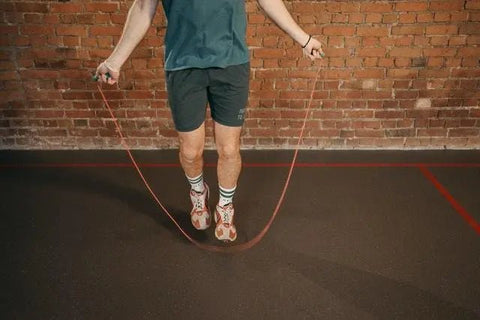Jump Rope Workouts for Soccer Training
Oct 20, 2022Erisson Lima

For soccer players, agility is nearly as important as speed and strength. Luckily, increasing agility is not difficult. You don't need a lot of equipment or space to develop it properly.
A jump rope is all you need, believe it or not.
As simple as it may appear, jumping rope can significantly improve your agility. First, it primarily targets your leg and ankle muscles, the two most important groups for soccer players. It is also excellent for increasing aerobic endurance. Jump rope has been a staple of agility training in many different sports, from boxing to volleyball, but today, we will primarily focus on jump rope workouts for soccer training.
Jump training, also known as plyometrics or plyos, builds strength and increases muscle power. Jump rope is an essential part of this training and a basis for building agility.
Players who want to improve their balance, explosive running, direction-changing speed, and jumping height will incorporate jump rope and weighted jump rope workouts into their training.
Speaking of weighted jump rope training, it increases the effectiveness of jump rope workouts and builds leg and ankle strength. Strength in these areas leads to improved explosiveness, which is one of the most important aspects of soccer.
We've all been guilty of admiring Ronaldo's impressive goal-scoring bounces in recent years. It has probably got you thinking too - how does he do it? If you are a soccer geek, you've probably googled some of his training and noticed a rope in his hands on many clips.
Plyometrics involved in this simple yet highly effective practice makes his whole physiognomy prepared for these intensive jumps and his sprint more explosive - making him a perfect and ruthless human goal-scoring machine.
You'll want to find the perfect jump rope to begin your training. Certain elements make up a quality jump rope, so you should ensure that your rope has all of them.
Adjustability is the first thing you'll want to look for in a jump rope. Look for a rope that you can adjust the length of.
The second thing you should consider is what surface are you jumping on? If you're jumping outside you'll wear through your rope quickly unless you're using a heavy pvc or beaded jump rope.
The final element to look at is going to be the weight. As we've already mentioned, a weighted rope is the best option for soccer players.
(Related: See our jump rope buyer's guide>>)
Before you begin any serious exercises, you must first understand the proper technique for jumping rope. While jumping over a rope may appear to be a simple enough task, it can be harmful if done incorrectly. For this reason, you should try to do the following:
These six steps will ensure that you are in the best possible position to do the exercises and staysafe.

If you ask pro sportspeople, most rely on CrossFit's high-intensity interval training as a great way to improve stamina and motor skills. As a crucial part of CrossFit, a jump rope workout is a simple and effective way to transform your body and, simultaneously, an essential cardio training element.
(Related: See our video tutorials on jump rope tricks & movements>>)
Perfecting some of these forms will take time, but the reward is improved footwork, balance, and coordination. However, a couple more critical pieces of advice follow jump rope workouts for soccer players.
Both regular and CrossFit jump rope workout preparation involves choosing the right training shoes. You need to find shoes that adequately cushion the balls of your feet and absorb the jolts, saving your shins.
Finally, don't forget that correct jumping forms and patient repetition bring the best results. Ideally, a professional trainer would advise you on proper body positioning. However, if you exercise alone, master the basic jump form, so you can jump without tripping yourself.
Once you get into the jumping routine, switching forms will come more easily and naturally, and you can slowly increase the number and the duration of sets. Remember that the most successful jump rope workouts for soccer training are those that don't result in any injury.
We're all about equipping and encouraging people to take on big challenges, because we know the process of doing hard things helps us grow in character and capacity.
Frequently bought together
You may also like
0 Comments
There are no comments for this article. Be the first one to leave a message!